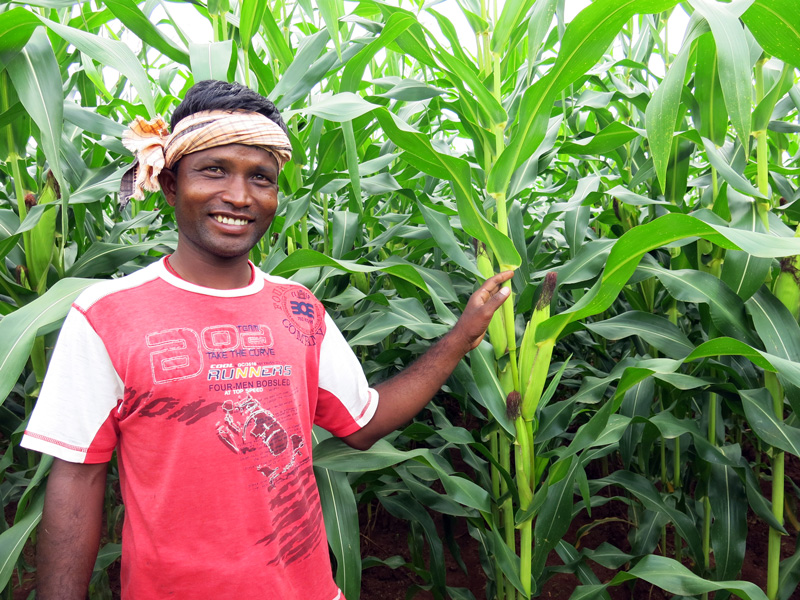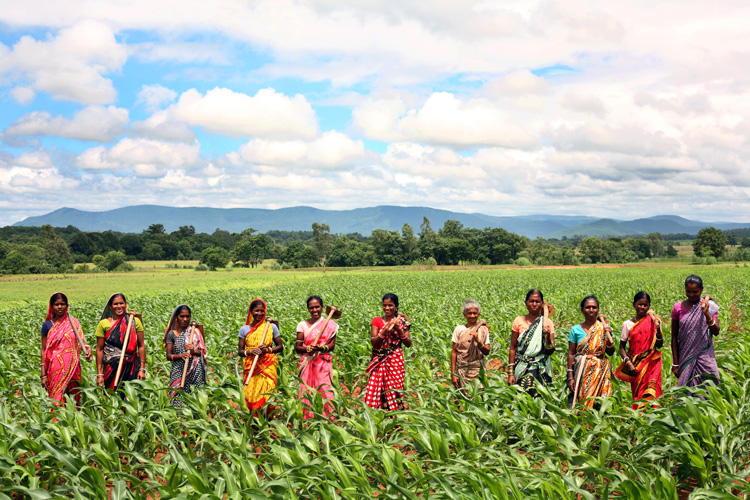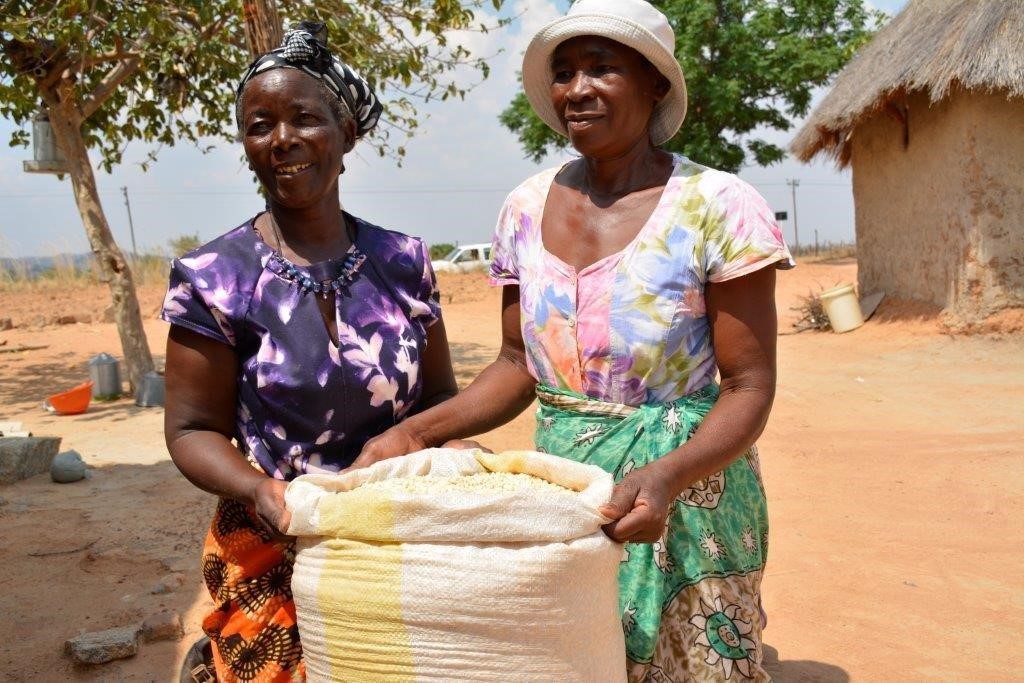Badbil is a remote and deeply impoverished tribal village in the plateau region of Mayurbhanj in the east Indian state of Odisha. The village is home to 200 families belonging to four indigenous tribes who have traditionally grown a local rice called Sathia.
Due to regularly occurring droughts and declining rainfall, families have started giving up rice cultivation. The rice crop’s high demand for water has resulted in about a 40% decline in total rice production in India’s eastern states during severe droughts, with an estimated loss of US$ 800 million. As a result, Mayurbhanj’s plateau area is now considered unsuitable for growing rice and remains fallow for most of the year.
“Farmers also face the problem of nutrient-depleted lateritic and acidic soils, which are dominant in these areas and commonly dismissed as degraded and unproductive by the local population,” said R.K. Malik, CIMMYT Senior Agronomist.

However, scientists believe that maize––due to its versatility and resilience––can help increase agricultural productivity in several parts of drought-prone Odisha. “By cultivating maize in this region, farmers can stop soil quality from declining, save water and earn more,” said Malik.
Farmers in tribal areas of Odisha have traditionally grown local maize varieties in home gardens for household consumption, selling their remaining surplus in local markets. According to CIMMYT Agricultural Specialist Nabakishore Parida, these farmers’ yields are low because they plant “old local varieties and scatter seeds by hand.” They also lack adequate information about modern weed control practices and inputs such as fertilizer.
In collaboration with Odisha’s Department of Agriculture, CIMMYT’s Cereal Systems Initiative for South Asia (CSISA) has been working in low-yielding maize areas, as well as fallow lands like those in Mayurbhanj’s plateau area, to promote uptake of better agronomic practices, such as sowing with a seed drill and applying site-specific nutrients, and identify the best performing maize hybrids.
As a result, maize yields have increased by nearly 75%. “Many farmers who opted for these agronomic practices have reported grain yields of more than five tons per hectare in contrast to under two tons per hectare with traditional practices,” added Malik.
Farmers are now showing interest in line sowing of maize and working with service providers who can be hired to plant maize in lines using multi-crop planters. CSISA and its partners are training new service providers and raising awareness by involving local partners to help create demand for this technology and further spread maize cultivation in the plateau region of Odisha.

Women spearhead efforts to boost maize farming
In 2013, CSISA started working with Johar Jaher Ayo, a women’s self-help group (SHG) for collective maize farming in Badbil. Maize production doubled compared to 2012 with the introduction of hybrids, appropriate plant populations, seed drilling and nutrient management, according to CSISA’s results. The group earned a profit of nearly US$ 250 by selling surplus green maize and maize grain while still providing enough for their families.
Johar Jaher Ayo’s success inspired more women’s SHGs to successfully cultivate and earn profits by selling hybrid maize in 2014 and 2015. Saraswati SHG, comprised of 13 tribal women, earned a profit of
US$ 1500 by selling seven tons of dry grain and around one ton of green maize ears. In 2015, 395 women farmers linked to 42 SHGs adopted line sowing of maize and improved agronomic practices.
To reduce costs and drudgery, they hired a mechanical power weeder, saving “US$ 31 per acre on weeding,” said Anita Lohar, a progressive woman farmer and member of Jagat Janani SHG. “It takes half the time of manual weeding, which makes it very useful as we have short dry periods with unpredictable rains during the rainy season.”
According to Lohar, maize farming has changed from old traditional practices, which were labor intensive and less profitable, and has asserted women’s fundamental role in the agricultural sector.
 Climate adaptation and mitigation
Climate adaptation and mitigation 

